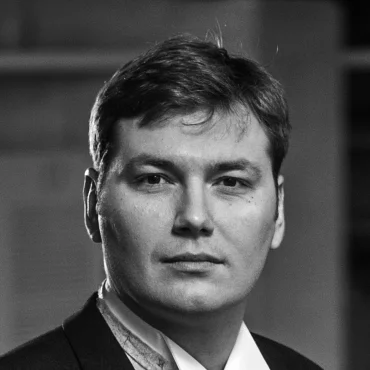Madama
Butterfly
Giacomo Puccini
Japanese tragedy in three acts
Libretto: Giuseppe Giacosa, Luigi Illica
World premiere: 17 February 1904, Regio Teatro alla Scala, Milan
Polish premiere: 3 December 1908, Teatr Wielki, Warsaw
Premiere of this production: 29 May 1999, Polish National Opera, Teatr Wielki, Warsaw
In the original Italian with Polish surtitles
The story of Cio-Cio-San is one of the most beautiful Puccini operas about love. To think that its 1904 premiere at Milan’s La Scala was one of the most bitter experiences in the composer’s life! The atmosphere in the auditorium was almost unbearable. ‘La Bohème!’ chanted the crowd, accusing Puccini of reusing his musical ideas, while booing and yawning ostentatiously. The performance was a complete and utter failure. The composer was savaged by the critics. Rewritten and restaged at the Teatro Grande in Brescia, the opera scored an ultimate triumph. The audience demanded encores of seven passages and the opera became a favourite with theatre programmers around the world.
The Warsaw premiere of Mariusz Treliński’s production of Butterfly was almost as successful. The staging dazzled nearly everyone, including Plácido Domingo, who said in a 2006 interview: ‘Never before in my long life have I seen such an excellent production of Madama Butterfly. But that is not all. It is one of the most beautiful performances I have ever seen in all of opera…’ It was thanks to him that the Treliński/Kudlička duo’s staging was shown at the Washington Opera.
The American audiences were dazzled, too. And so were the critics. Numerous enthusiastic reviews were published in the press. The Washington Times wrote: ‘It is logical and beautiful in an entirely unexpected way. Perhaps, most of all, the simple settings focus attention where it needs to be on the characters and Puccini’s gorgeous, Debussy-tinged score, acted and sung by a first-rate cast.’
At the time, Mariusz Treliński and Boris Kudlička’s Madama Butterfly became the duo’s greatest success and opened the way for the Polish National Opera to join the elite group of internationally reputed opera companies. The production was subsequently staged at the Mariinsky Theatre in St Petersburg, El Palau de les Arts Reina Sofia in Valencia, the Israeli Opera in Tel-Aviv, the Teatro Lirico di Cagliari in Sardinia and the Royal Opera House Muscat in Oman.
Of all the Puccini’s heroines, Butterfly is portrayed with the greatest psychological realism. The audience watch as she clings to vain hope, is subjected to thoughtless cruelty, makes a desperate decision after losing everything that have ever mattered to her and resigns herself to her fate in the finale of the show.
Madama Butterfly is a beautiful and thoroughly coherent production that amazes with Boris Kudlička’s refreshingly creative sets devoid of unnecessary props or tacky exoticism and stylistically sophisticated costumes by Magdalena Tesławska and Paweł Grabarczyk. And above all, Puccini’s brilliant score featuring Japanese songs adapted to the harmonic system of European music. The composer brilliantly evoked the Orientalist colour through the use of the whole-tone and special scales, especially in the opening bars of the symphonic prelude to the third act. Not to mention the exquisite love duet at the end of Act 1, Bimba dagli occhi, and Cio-Cio-San’s beautiful love aria, Un bel dì vedremo.
The USS Abraham Lincoln docks in Nagasaki, and Officer Benjamin Franklin Pinkerton shows a great deal of interest in local culture, with a young Japanese girl as his guide. The fifteen-year-old geisha he meets goes to his head like a drink – his intoxication, however, proves quite fleeting. Her name is Cio-Cio-san (named not after the vermouth, but rather the eponymous Butterfly). After a fake wedding with the belle and a consummation of their relationship, Franklin from Lincoln fends his mistress off with a promise of his return once robins nest again. Robins take their sweet time to nest, and the beau returns to Japan with an American wife in tow. In the meantime, the geisha bore the fruit of her unrequited love. Once Cio-Cio-san realizes who the American lady is, she stabs herself to death with a dagger. Her son is to be taken to America. Through staging perfection, visual wisdom and pure beauty (let us not be afraid of this word) the entire production exudes – Mariusz Treliński brings to opera what Federico Fellini has brought to film, namely the absolute best. It would be a shame to miss it!
Cast
Credits
Synopsis
Sponsors
-
Patrons of the Polish National Opera | Partners of the Opera Academy
-
Partners of the Polish National Opera
-
Media patrons
-
Media partner





![[Translate to English:] fot./photo by Krzysztof Bieliński [Translate to English:] fot./photo by Krzysztof Bieliński](/fileadmin/_processed_/3/6/csm_2_biel_2e3087deb8.jpg)
![[Translate to English:] fot./photo by Krzysztof Bieliński [Translate to English:] fot./photo by Krzysztof Bieliński](/fileadmin/_processed_/a/1/csm_1_biel_92a182ca8f.jpg)
![[Translate to English:] fot./photo by Krzysztof Bieliński [Translate to English:] fot./photo by Krzysztof Bieliński](/fileadmin/_processed_/f/a/csm_3_biel_b7949fa7ed.jpg)
![[Translate to English:] fot./photo by Krzysztof Bieliński [Translate to English:] fot./photo by Krzysztof Bieliński](/fileadmin/_processed_/e/0/csm_4_biel_02269fbe64.jpg)
![[Translate to English:] fot./photo by Krzysztof Bieliński [Translate to English:] fot./photo by Krzysztof Bieliński](/fileadmin/_processed_/a/e/csm_5_biel_7e981cfb9d.jpg)
![[Translate to English:] fot./photo by Krzysztof Bieliński [Translate to English:] fot./photo by Krzysztof Bieliński](/fileadmin/_processed_/f/e/csm_6_biel_ada52847bc.jpg)
![[Translate to English:] fot./photo by Krzysztof Bieliński [Translate to English:] fot./photo by Krzysztof Bieliński](/fileadmin/_processed_/f/9/csm_7_biel_493865564a.jpg)
![[Translate to English:] fot./photo by Krzysztof Bieliński [Translate to English:] fot./photo by Krzysztof Bieliński](/fileadmin/_processed_/b/c/csm_8_biel_ed1a2bcd58.jpg)
![[Translate to English:] fot./photo by Krzysztof Bieliński [Translate to English:] fot./photo by Krzysztof Bieliński](/fileadmin/_processed_/7/5/csm_9_biel_7d5d246ffb.jpg)
![[Translate to English:] fot./photo by Krzysztof Bieliński [Translate to English:] fot./photo by Krzysztof Bieliński](/fileadmin/_processed_/2/b/csm_Madame_butterfly03_f22099340d.jpg)
![[Translate to English:] fot./photo by Krzysztof Bieliński [Translate to English:] fot./photo by Krzysztof Bieliński](/fileadmin/_processed_/d/8/csm_Madame_butterfly02_95671decdb.jpg)
![[Translate to English:] projekt/poster design Andrzej Pągowski [Translate to English:] projekt/poster design Andrzej Pągowski](/fileadmin/_processed_/9/8/csm_madame_butterfly_plakat_075df0a987.jpg)
![[Translate to English:] [Translate to English:]](/fileadmin/_processed_/d/5/csm_Mariusz_Trelinski_-_Madame_Butterfly_-_Teatr_Wielki_-_Opera_Narodowa_5201a190db.png)
![[Translate to English:] [Translate to English:]](/fileadmin/_processed_/f/e/csm_Aleksandra_Kurzak_w__Madame_Butterfly__w_Teatrze_Wielkim_-_Operze_Narodowej_45ddd0b8b0.png)
![[Translate to English:] [Translate to English:]](/fileadmin/_processed_/4/d/csm_Za_kulisami_odc.9__Madame_Butterfly__i_jej_minimalizm_dd36c4e71b.png)
![[Translate to English:]](/fileadmin/_processed_/c/d/csm_izabela_matula_2024_-_kwadrat_ac62cb7231.jpg) Izabela Matuła
Izabela Matuła  Rafał Bartmiński
Rafał Bartmiński ![[Translate to English:]](/fileadmin/_processed_/f/6/csm_csm_Lukasz_Golinski_1176ab8f54_8b4929cf33.png) Łukasz Goliński
Łukasz Goliński  Mateusz Zajdel
Mateusz Zajdel  Agata Schmidt
Agata Schmidt  Grzegorz Szostak
Grzegorz Szostak ![[Translate to English:]](/fileadmin/_processed_/8/5/csm_Joanna_Motulewicz_new_-_kwadrat_57c6bace38.jpg) Joanna Motulewicz
Joanna Motulewicz ![[Translate to English:]](/fileadmin/_processed_/8/0/csm_adam_walasek_kwadrat_1_301b61eb6b.jpg) Adam Walasek
Adam Walasek  Adrian Janus
Adrian Janus ![[Translate to English:]](/fileadmin/media/img/ludzie/dyrygenci/patrick_fournilier_fot_arch_artysty_-_kwadrat.jpg) Patrick Fournillier
Patrick Fournillier  Mariusz Treliński
Mariusz Treliński ![[Translate to English:] Boris Kudlička](/fileadmin/_processed_/7/a/csm_Boris_Kudlicka_4424_www_8b991ee181.jpg) Boris Kudlička
Boris Kudlička  Paweł Grabarczyk
Paweł Grabarczyk  Magdalena Tesławska
Magdalena Tesławska ![[Translate to English:]](/fileadmin/_processed_/f/4/csm_Emil_Wesolowski_fot._Pawel_Roslon_mini__e5d48cae55.jpg) Emil Wesołowski
Emil Wesołowski  Stanisław Zięba
Stanisław Zięba  Piotr Staniszewski
Piotr Staniszewski 








